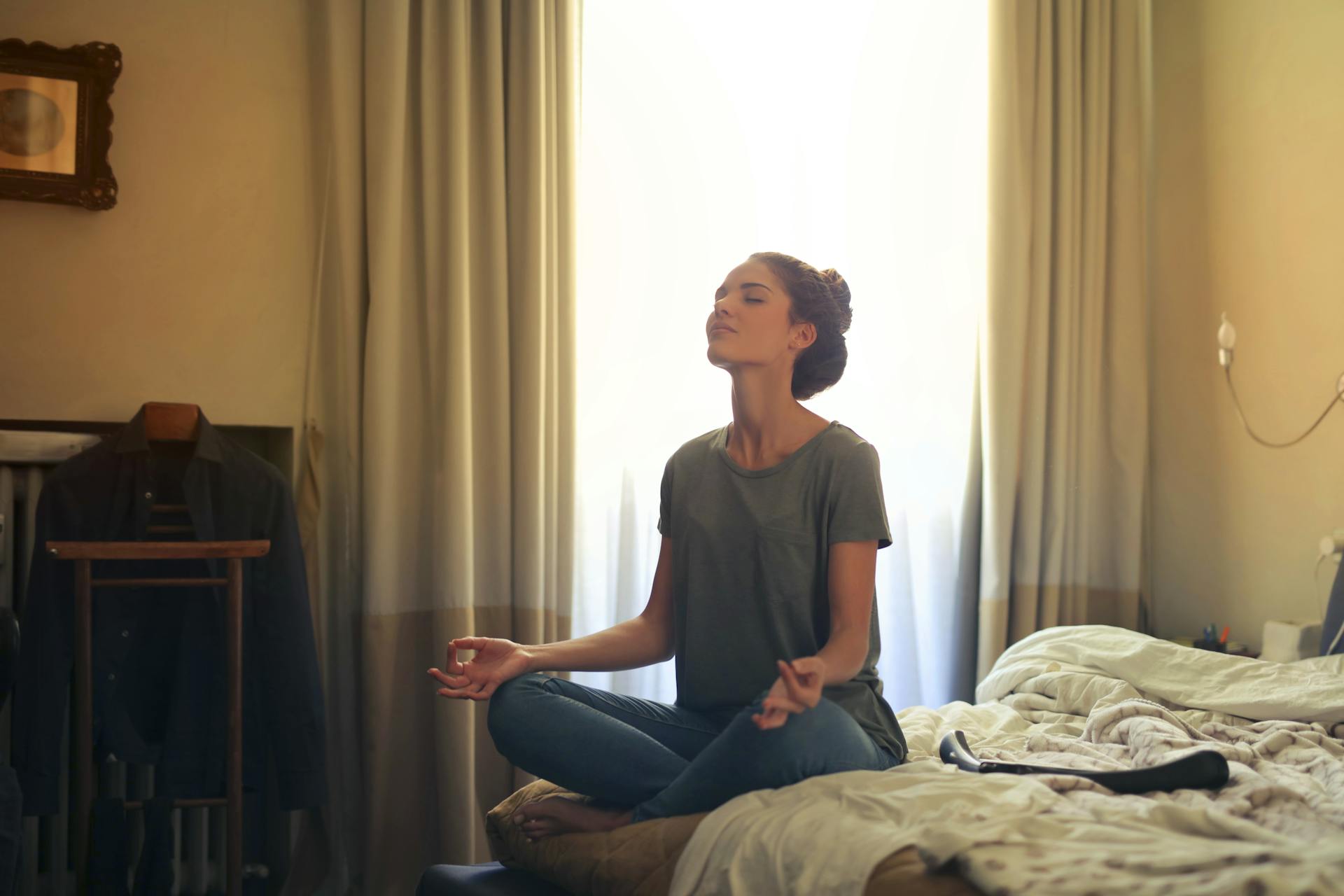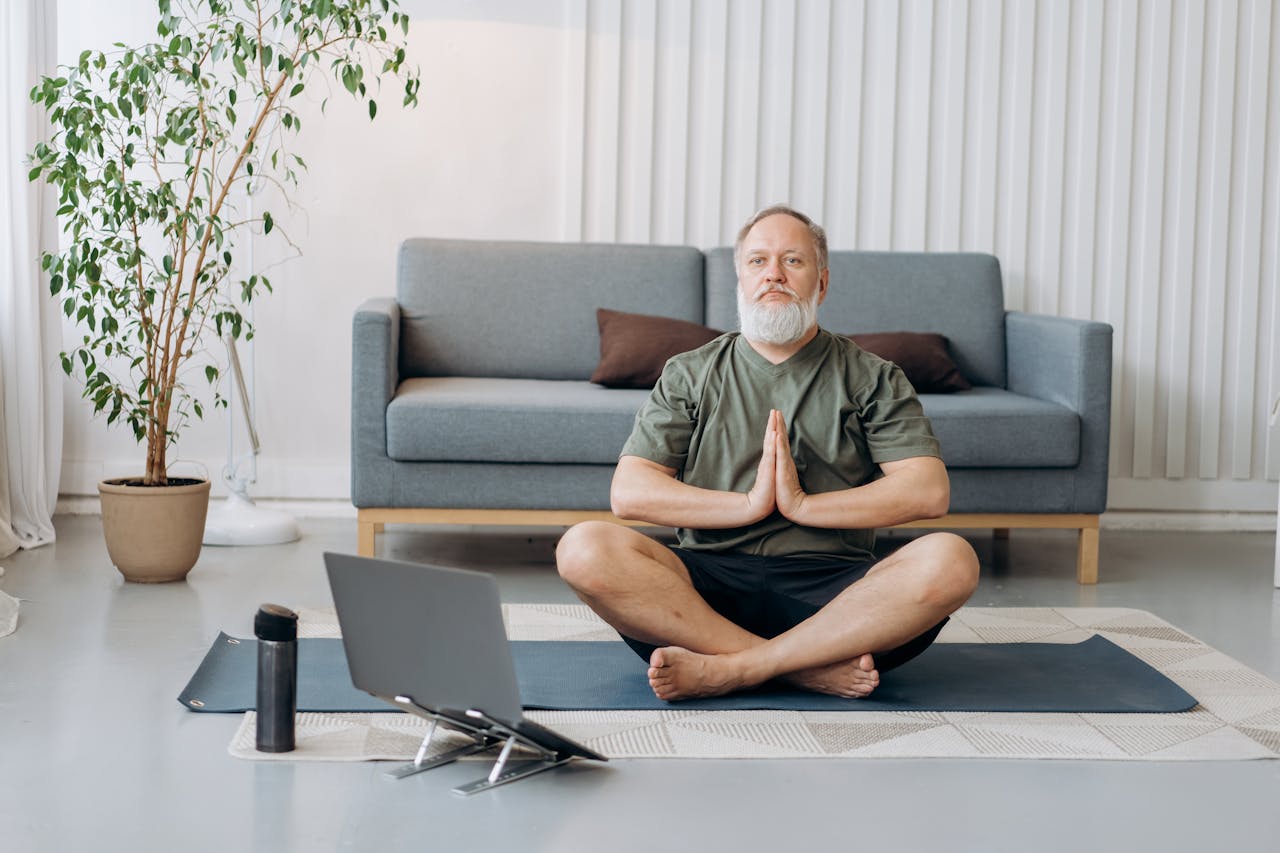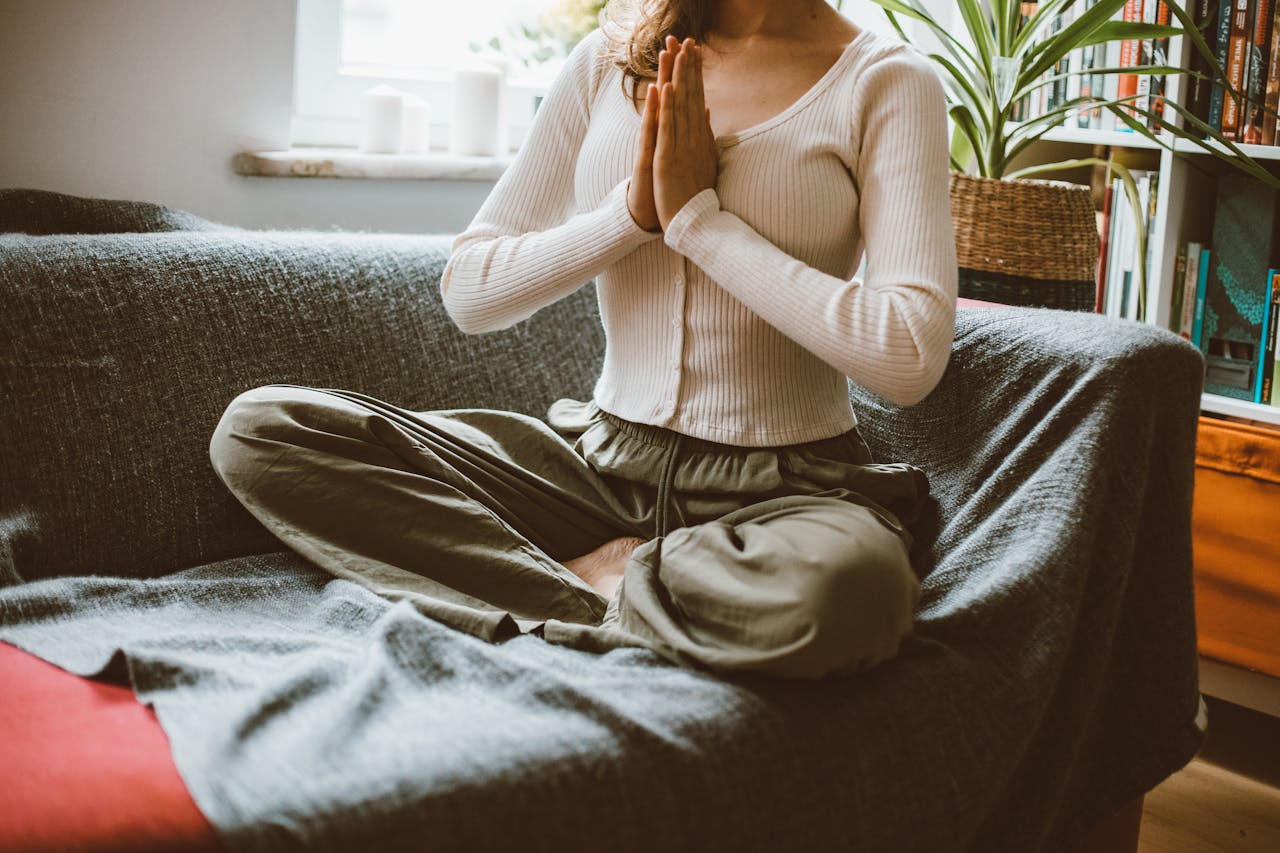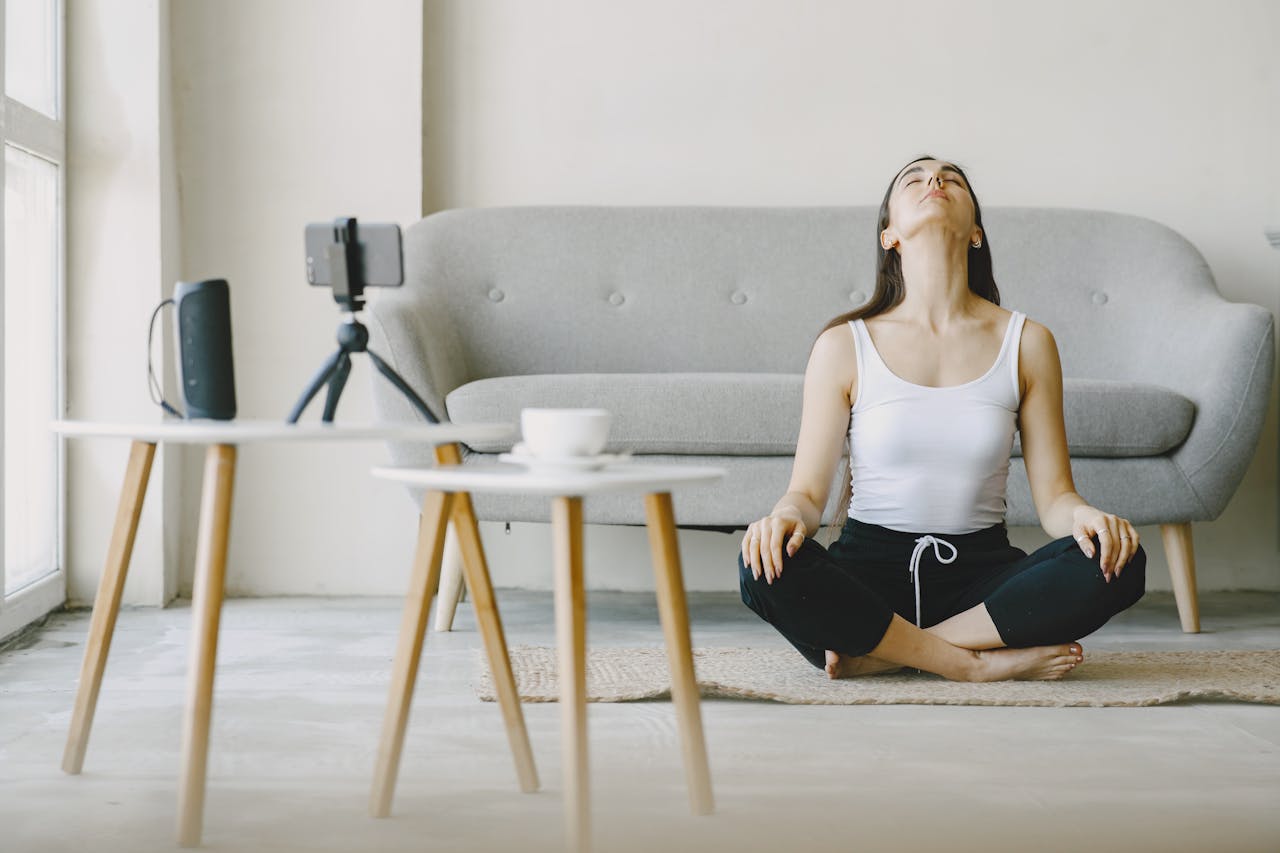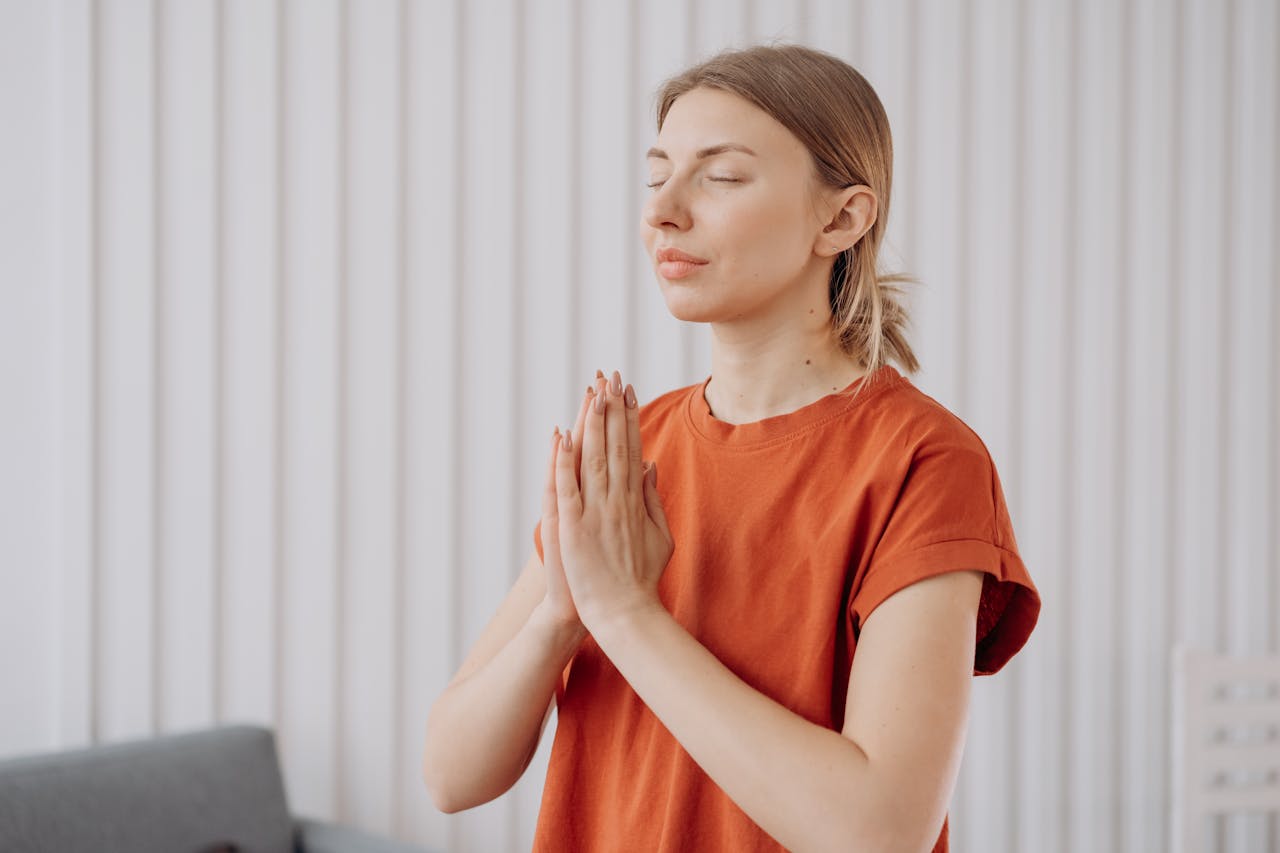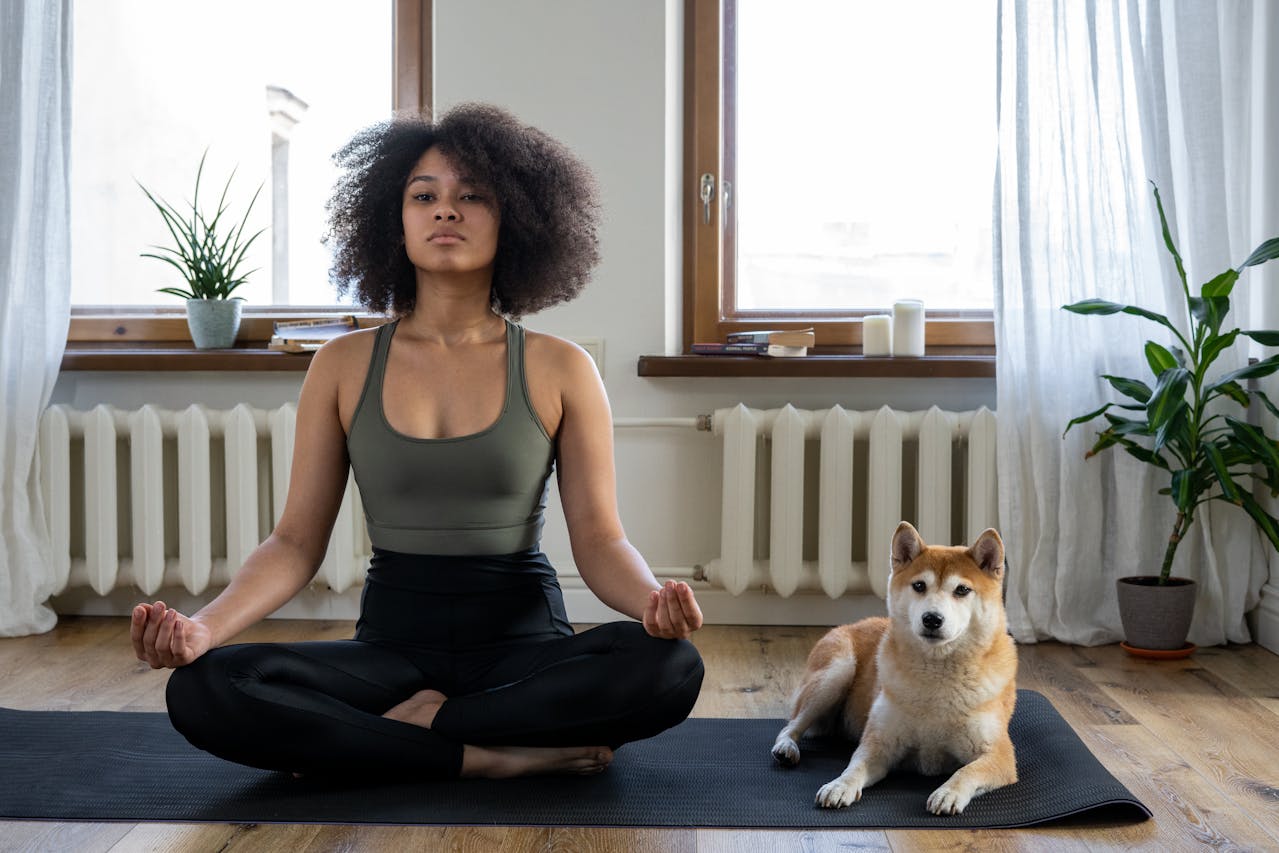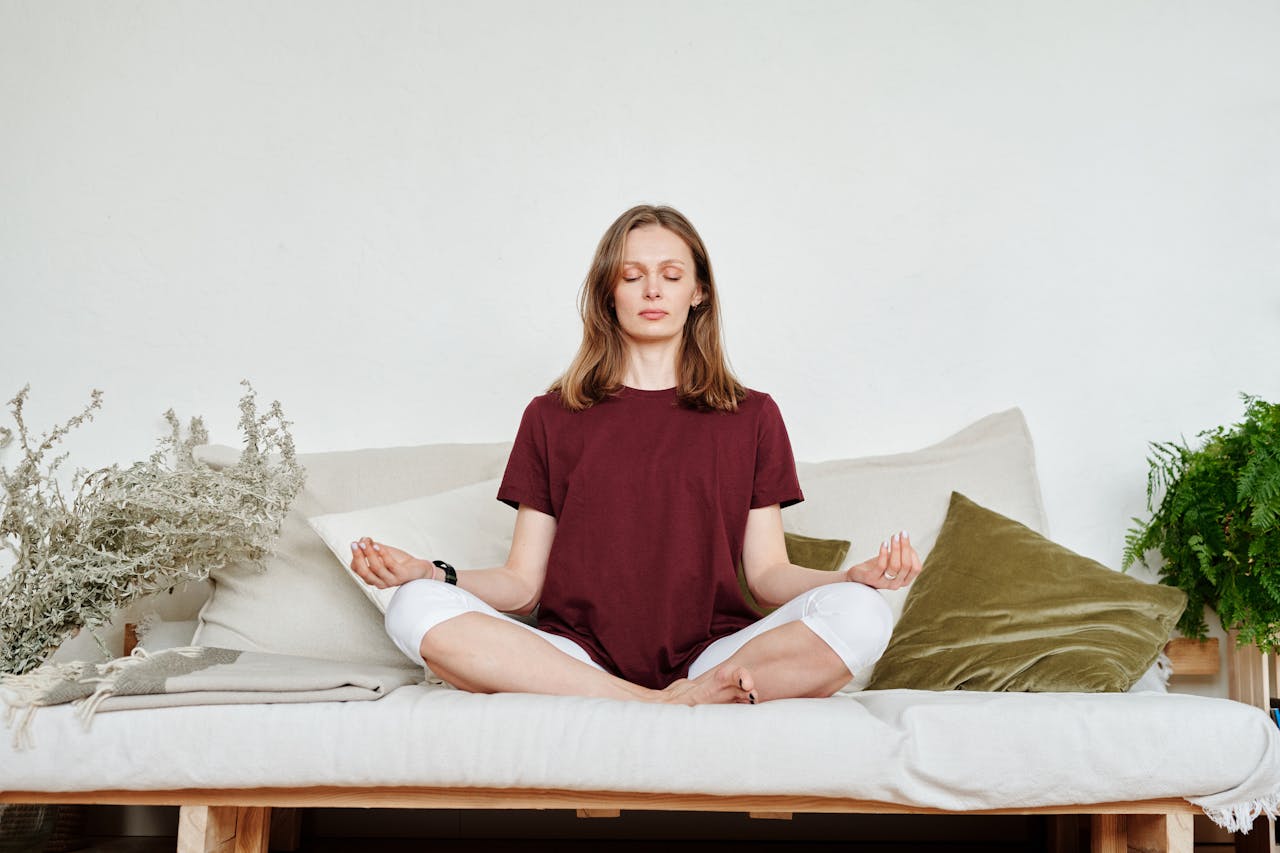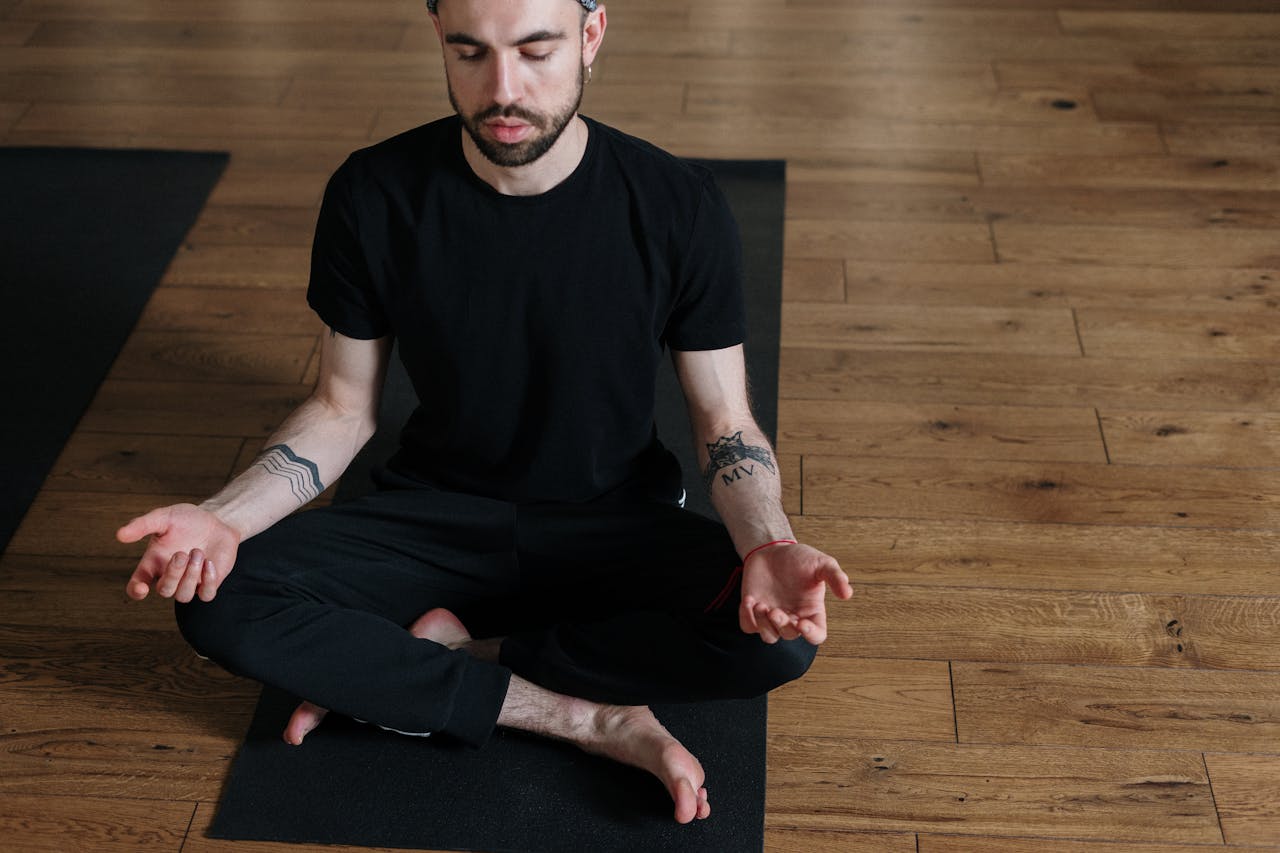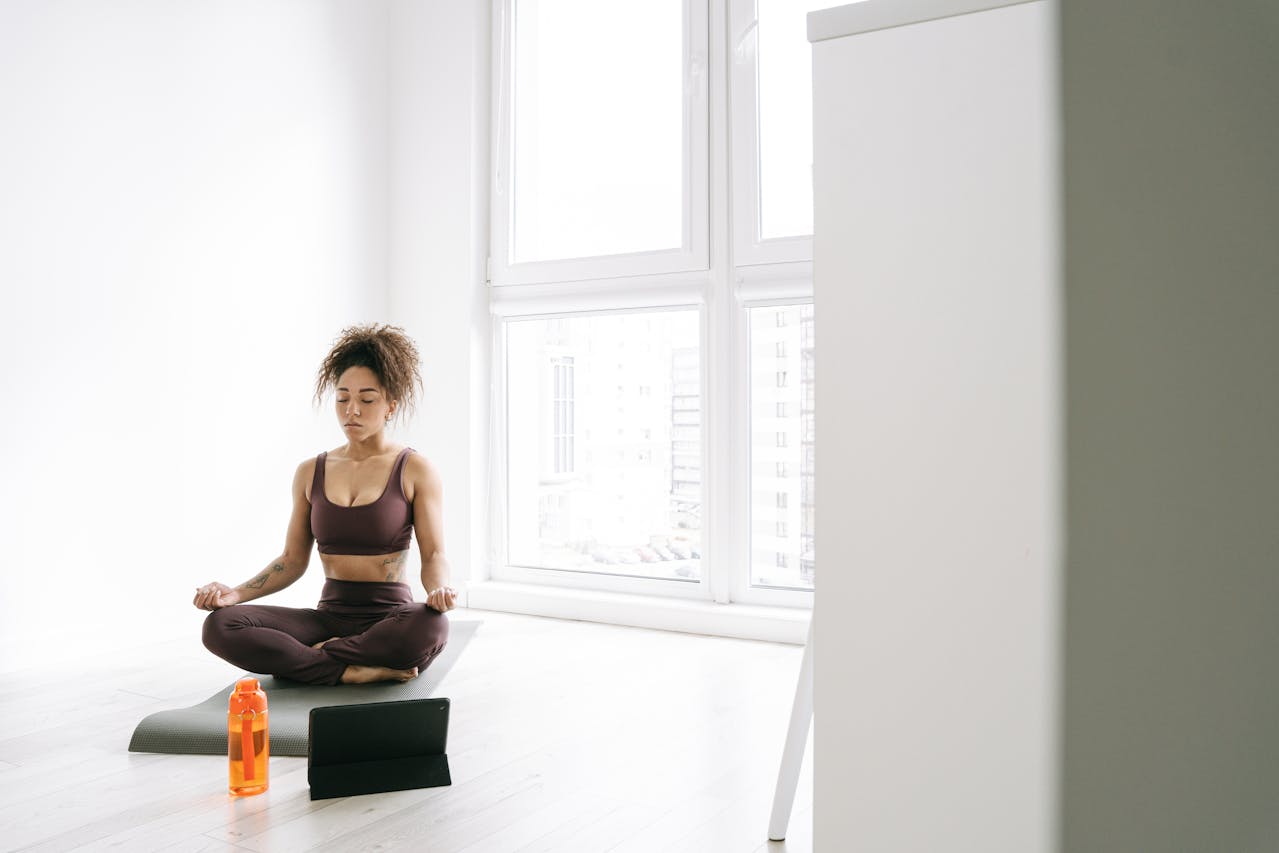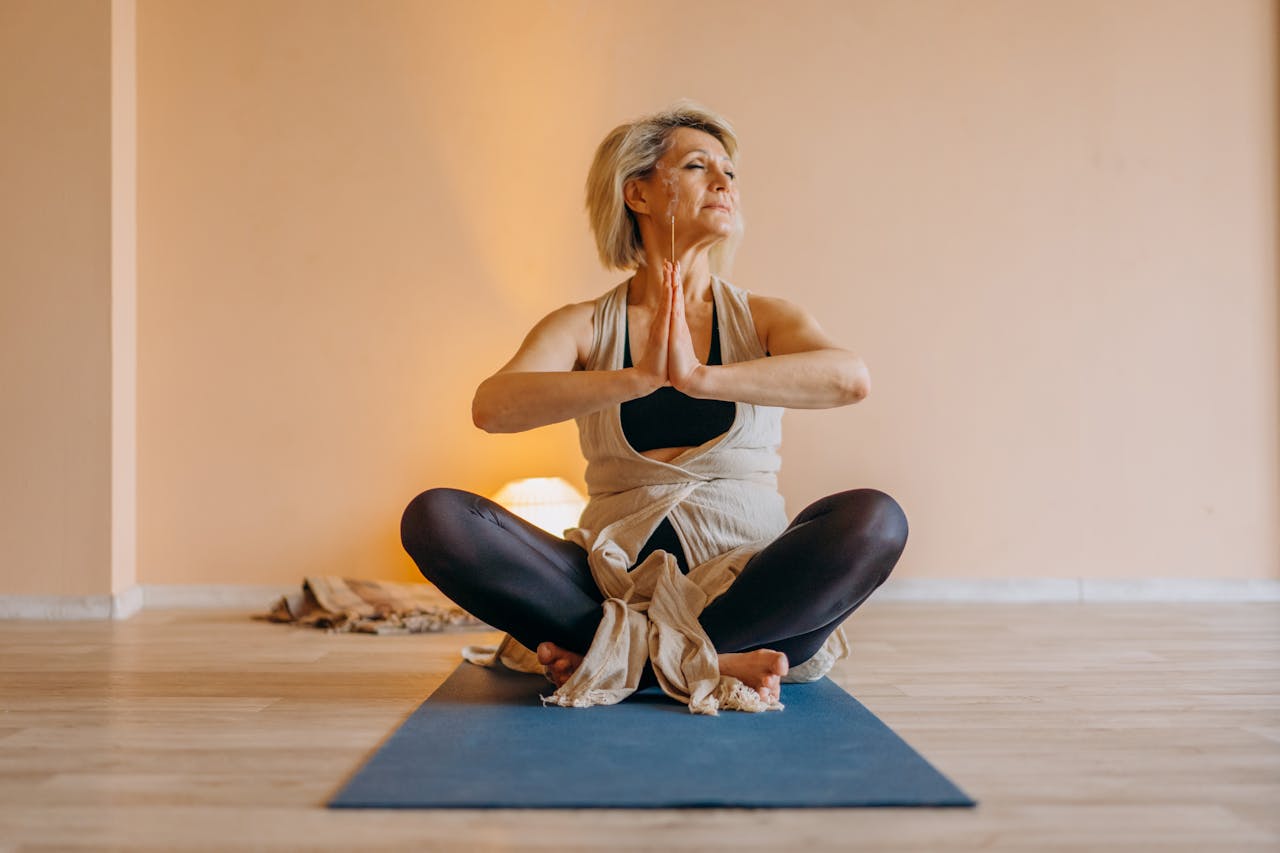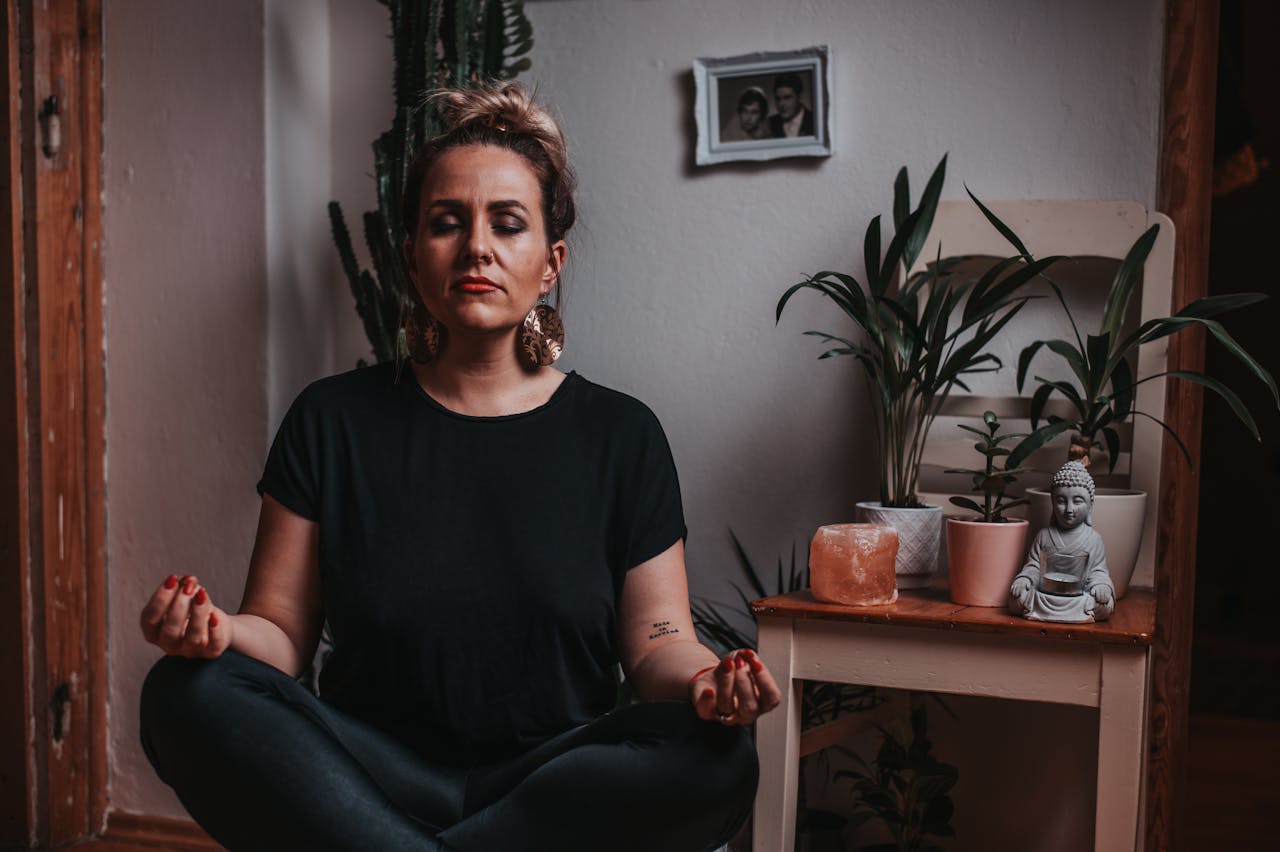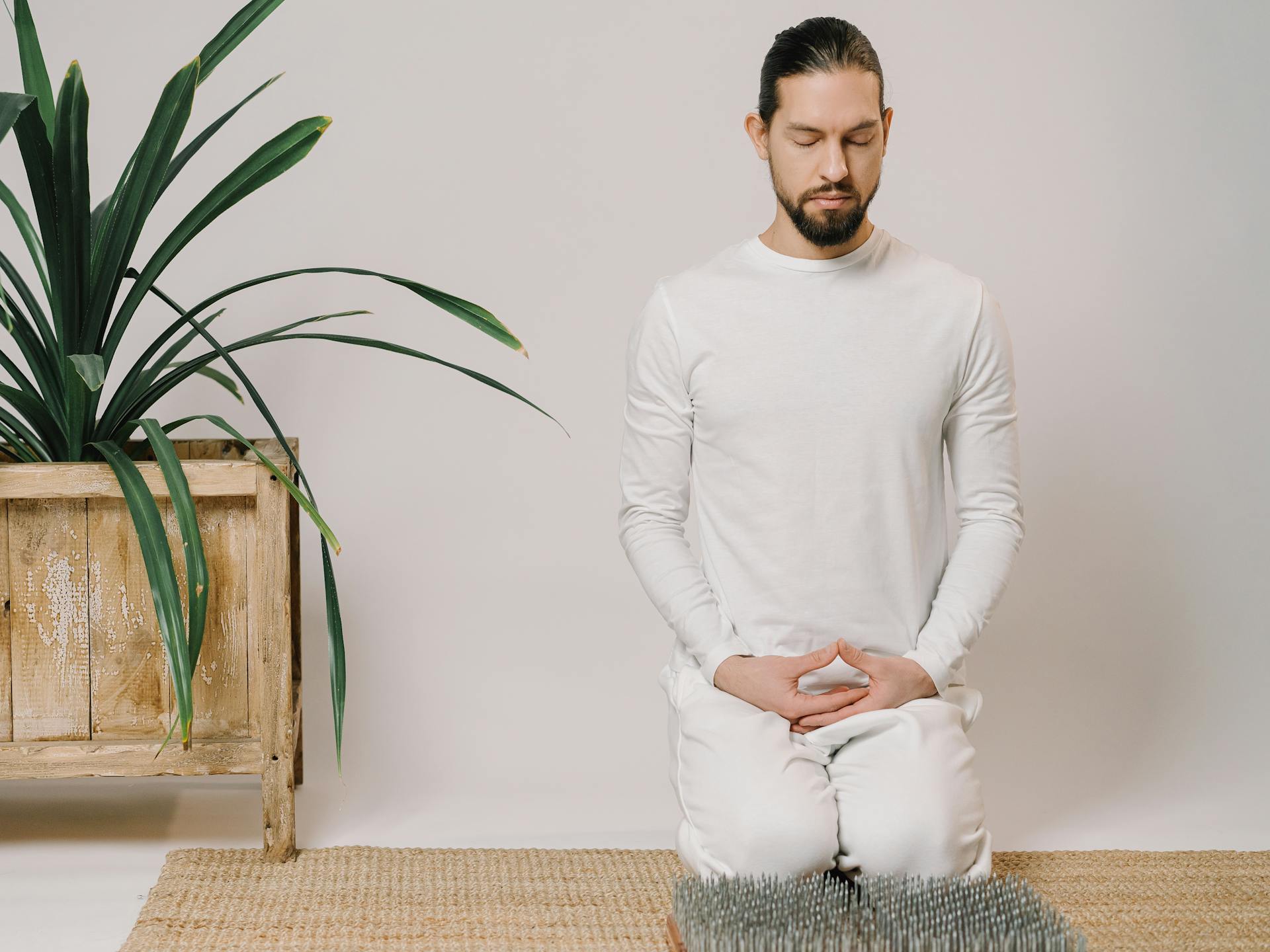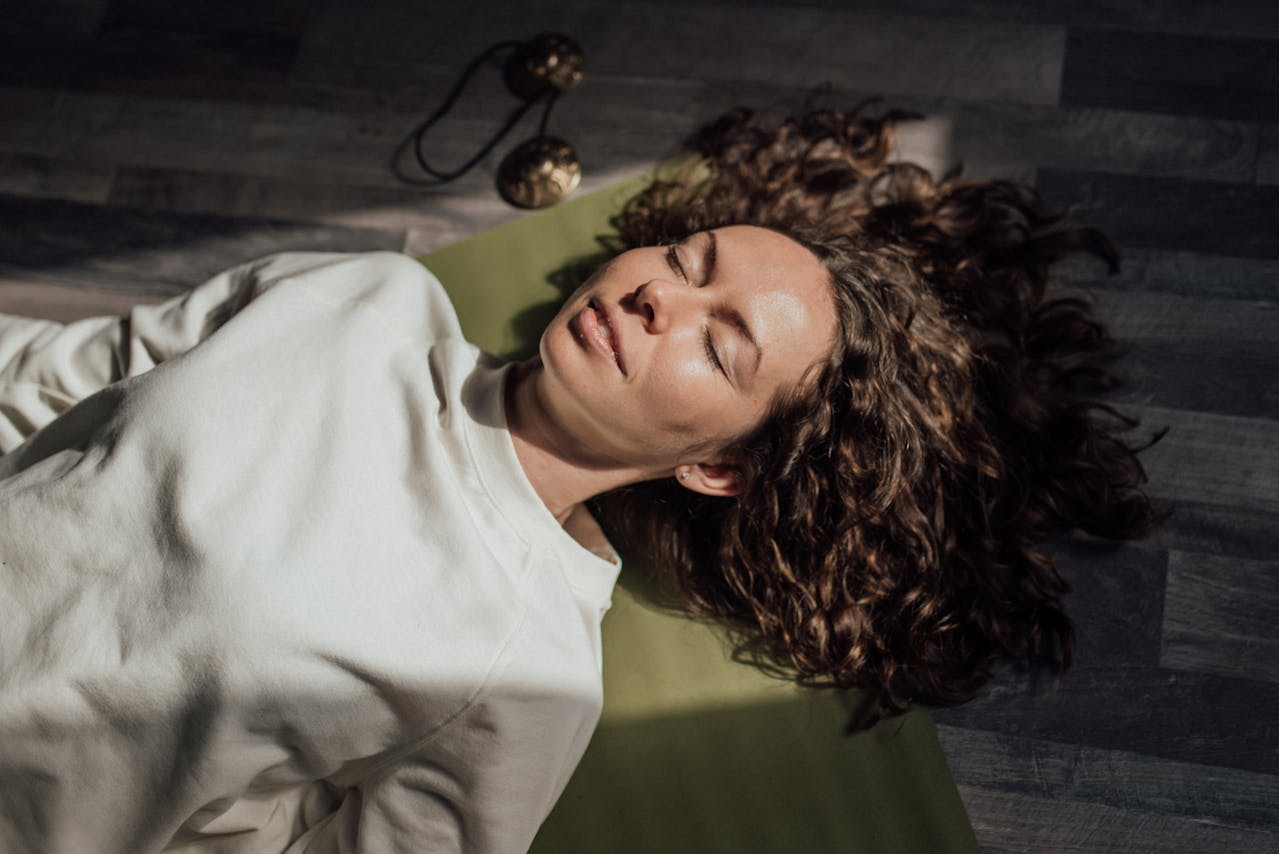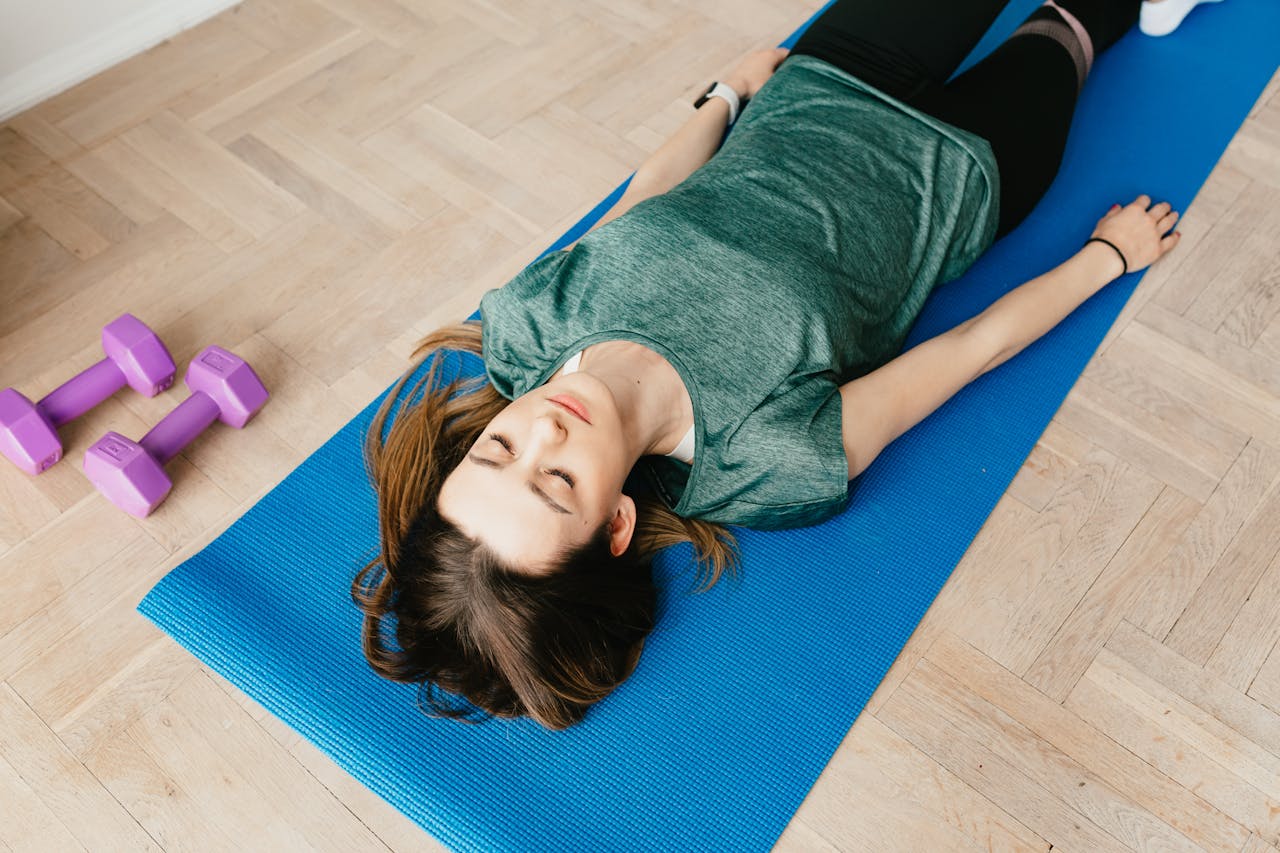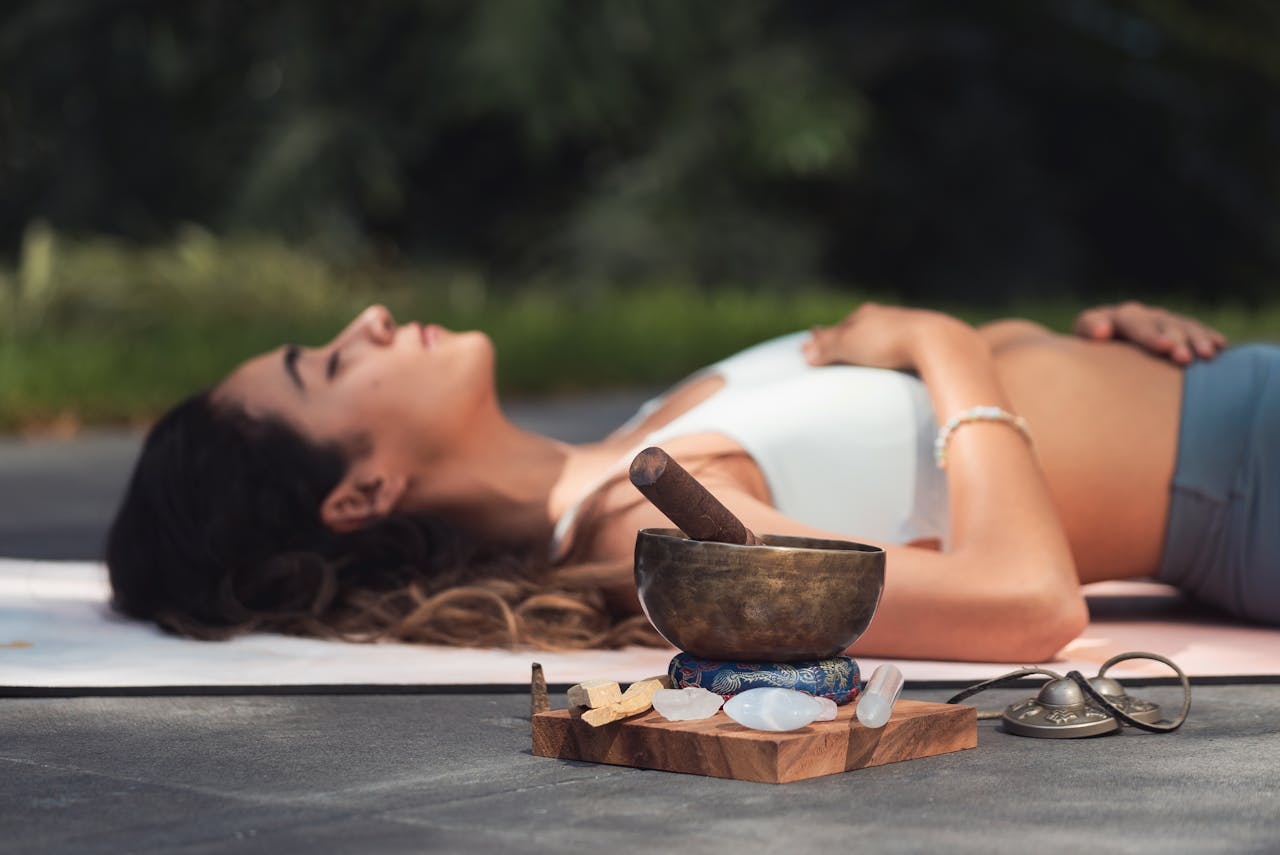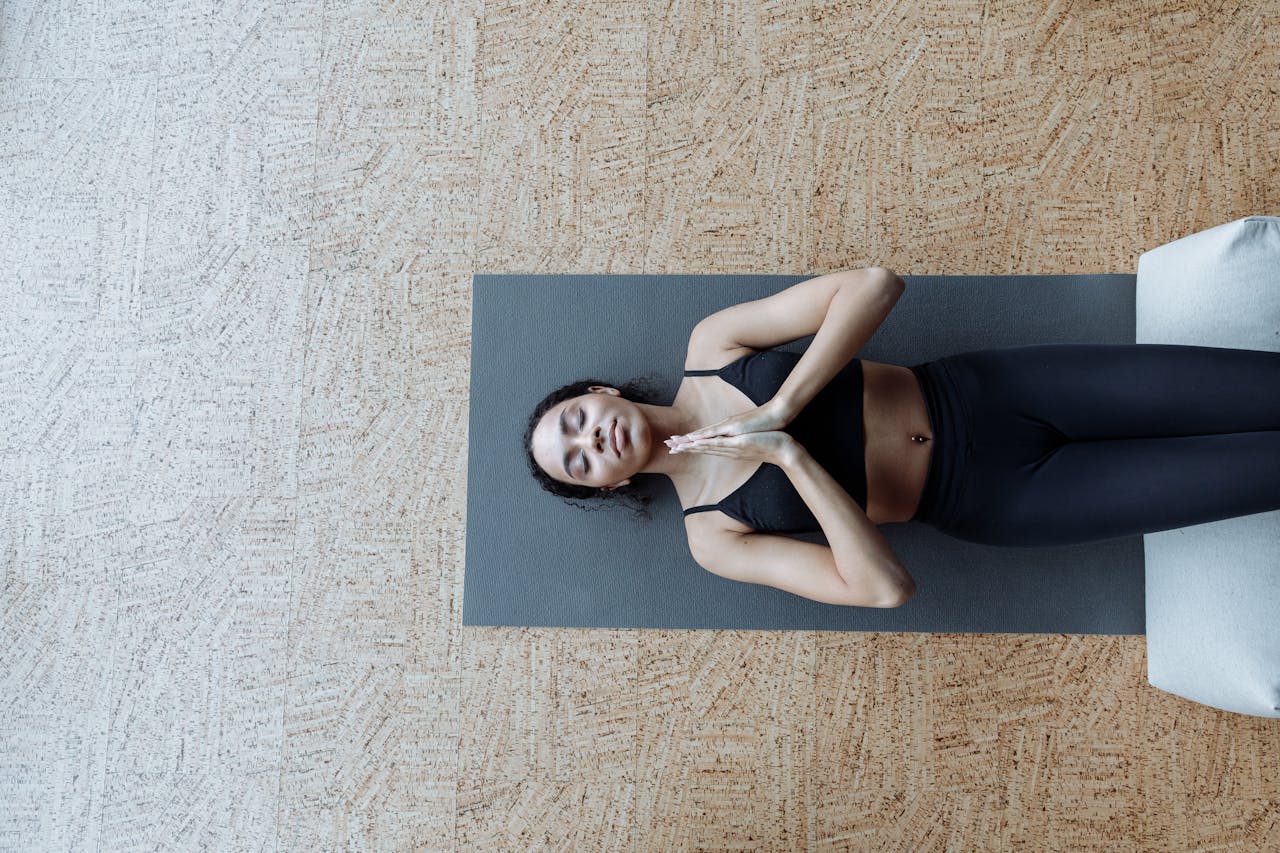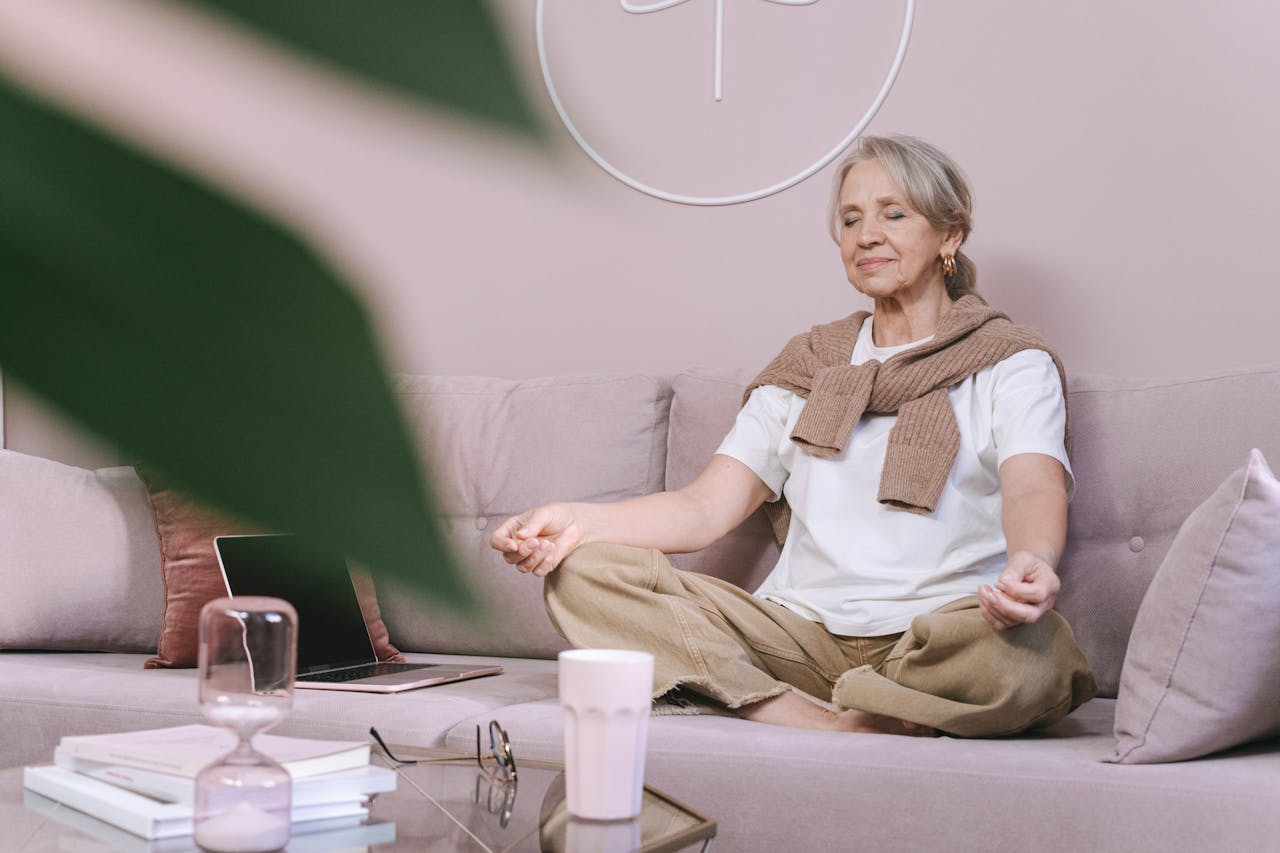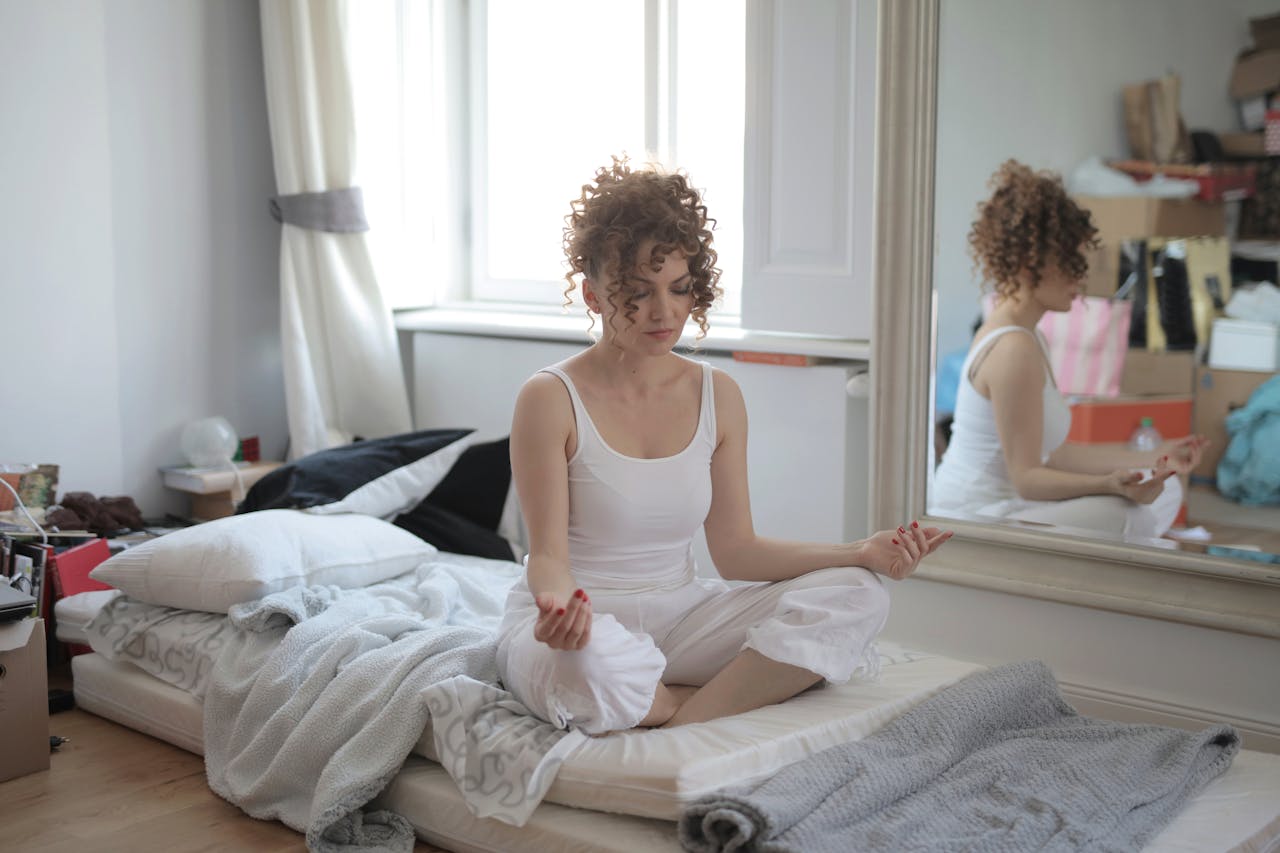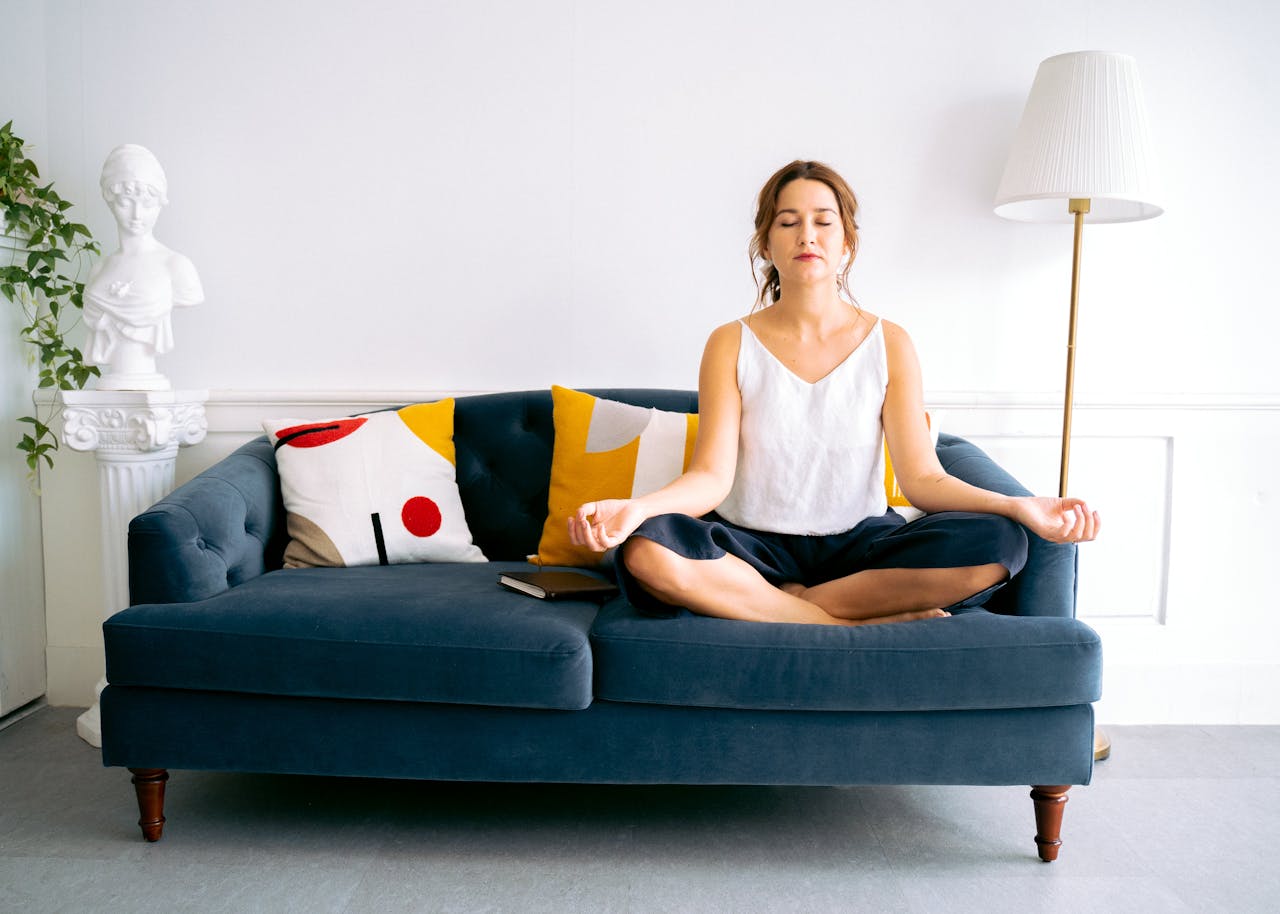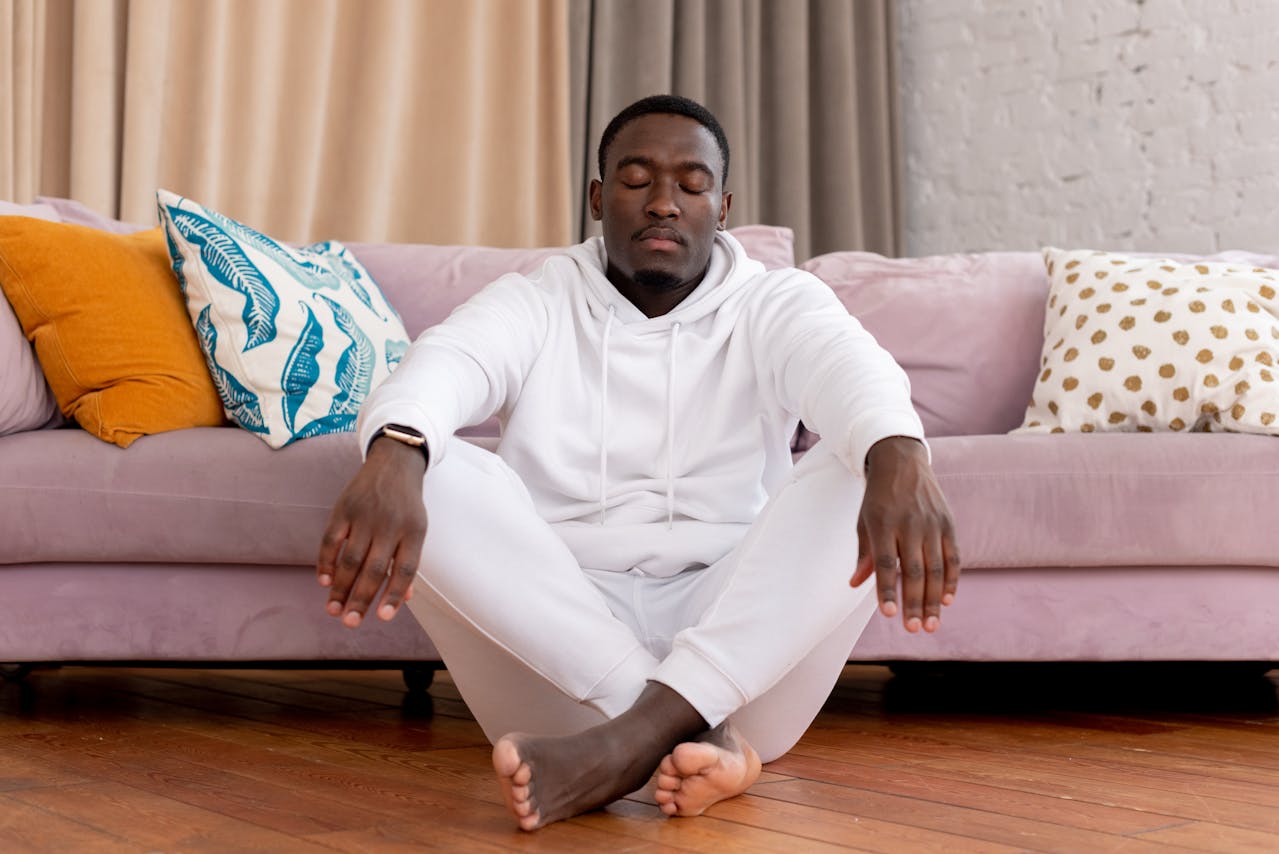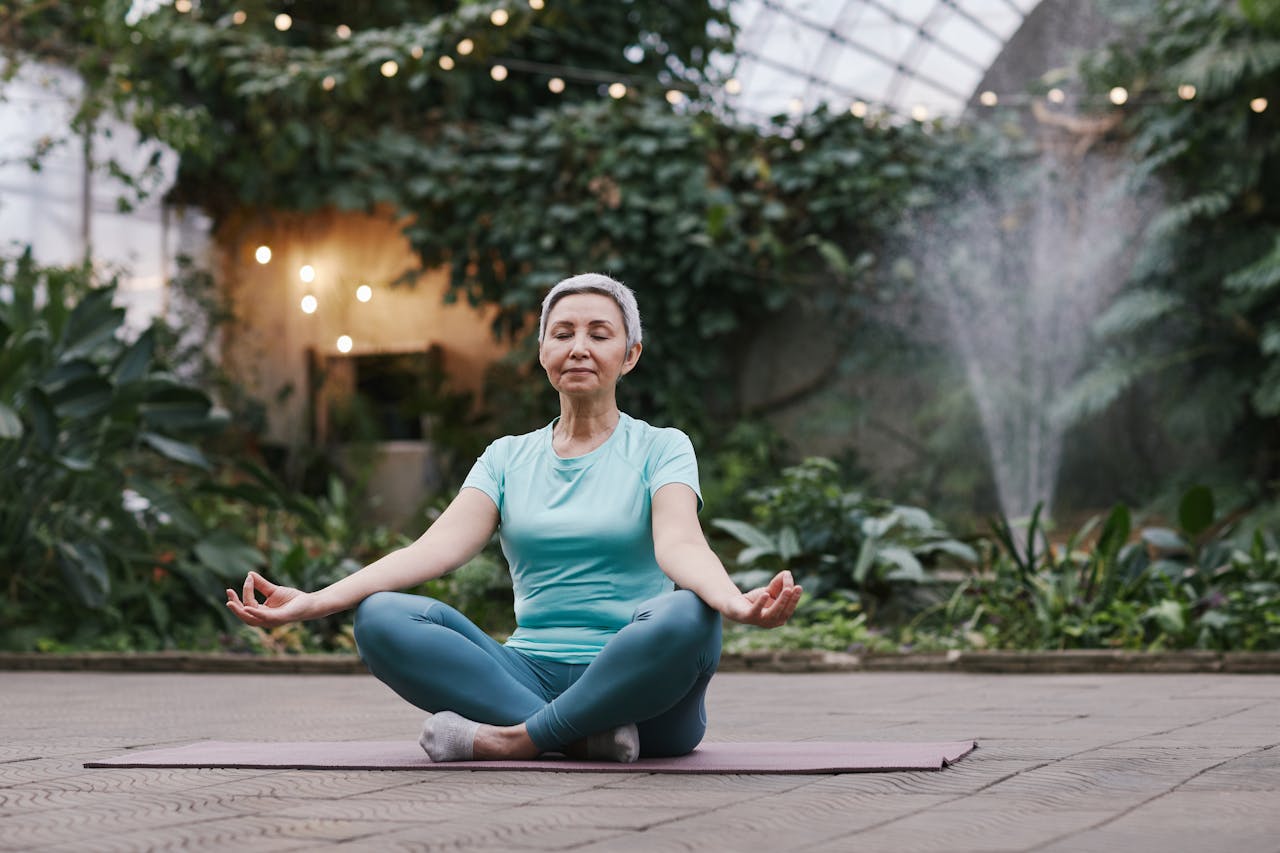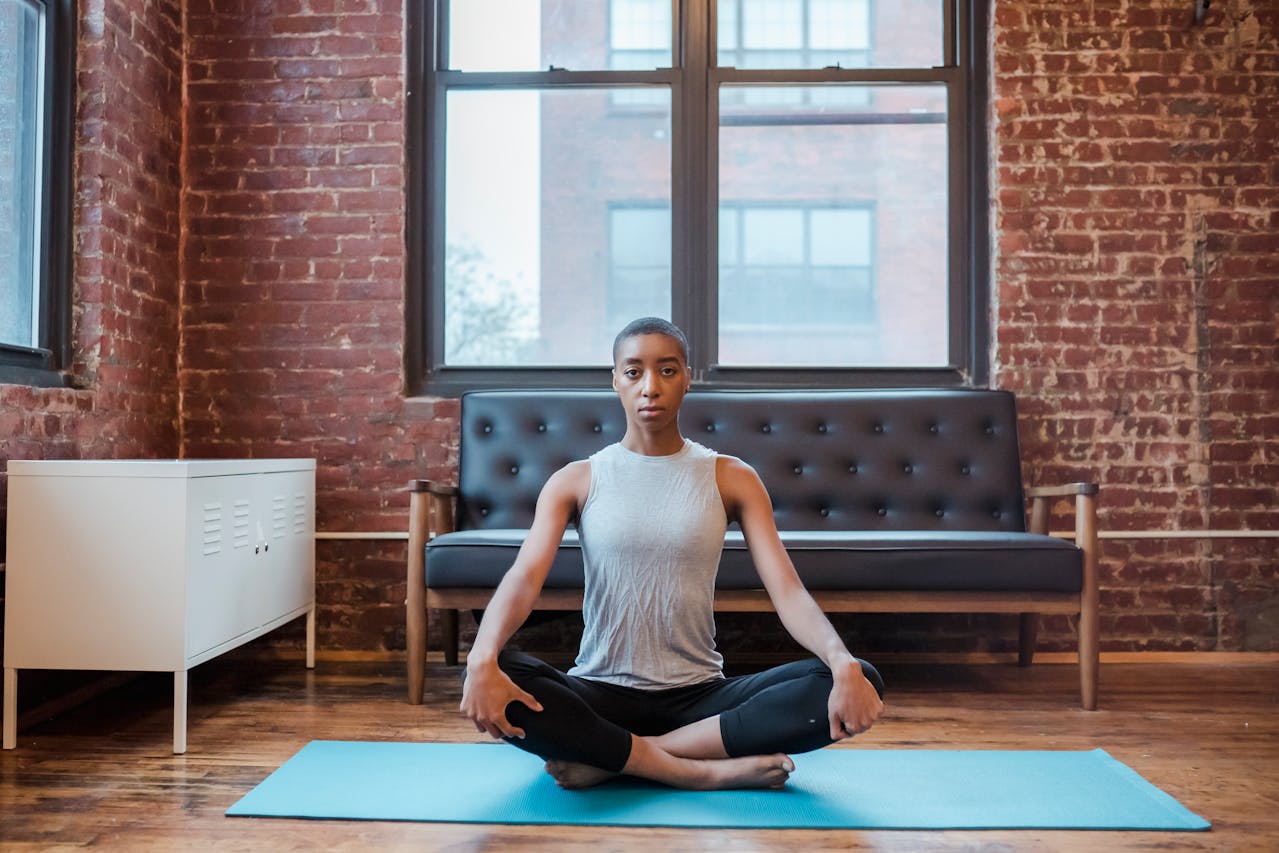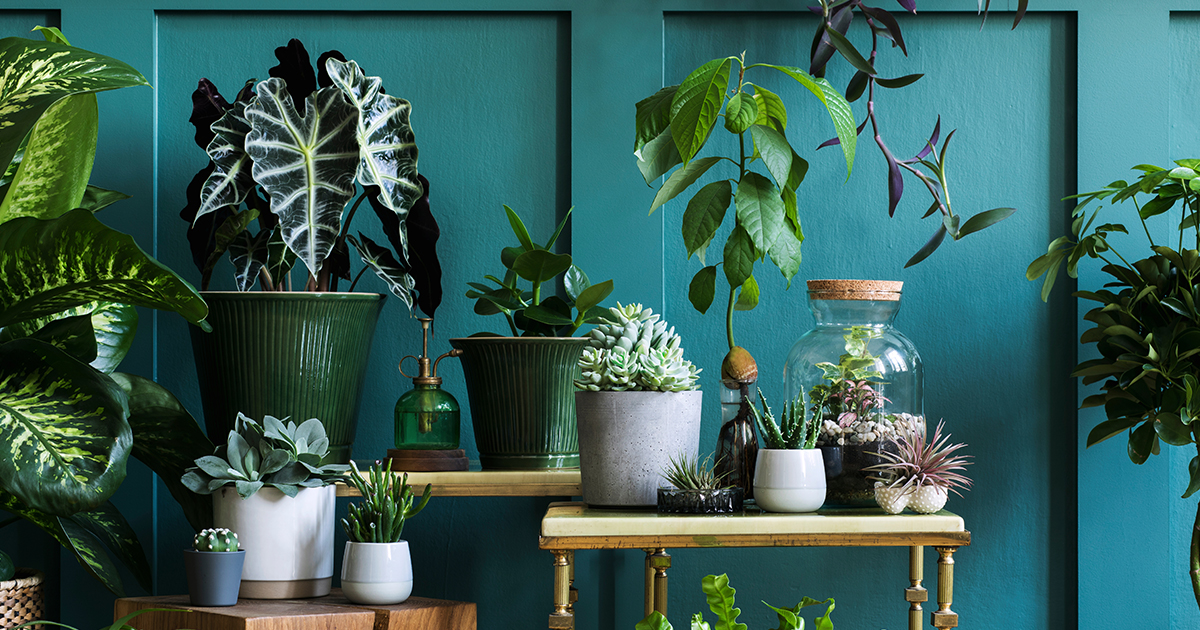Why Should You Meditate?
Meditation may not be able to cure every ailment, but it's a powerful tool to help regulate your nervous system. It can significantly lower stress, improve your ability to connect and focus, and quiet your mind. It may also help you understand your pain.

How To Meditate
You don't need much to meditate: a quiet space to sit. But though you don't need a fancy gym membership for this practice, it isn't always as easy as it looks.
Find A Calm Place To Sit
Choose an environment that is peaceful and quiet.
Set A Timer
Meditating for long periods might be a struggle in the beginning. If you're new to the practice, try meditating for as little as five or 10 minutes. As you continue your journey, you can increase your time limit.
Be Aware Of Your Body
Finding a comfortable seat is key. Make sure you're sitting in a position that you can hold for an extended period of time: cross-legged, kneeling, or in a chair.
Notice Your Breath
Tune into the movement and sound of your breathing. Try to follow your breath as you take deep, long inhales and exhales.
If Your Mind Wanders, Center Yourself
It's natural for the mind to wander, but meditation will help you stay in the present moment. If intrusive thoughts creeps in, notice them—and then return your breath.
Be Gentle With Yourself
If you do find yourself losing focus, don't be too hard on yourself. Instead of obsessing over making a perceived mistake, just let it go, and return. Be kind to yourself.
End Your Practice With Grace
When your meditation time comes to a close, exit the practice slowly. Take in your surroundings: the sounds and smells. Scan your body, mind, and emotions. If you closed your eyes, open them.
How Often Should You Meditate?
For meditation to be truly effective, you should try to meditate at least once per day. Even five minutes can be effective.
Improve Your Attention Span
According to the neuroscientist Amishi Jha's research, practicing meditation for just 12 minutes a day, five days a week, has enormous benefits—notably improving one's ability to pay attention.
How To Get Better At Meditating
Meditation begins with the breath, but that's just the tip of the iceberg. Mindfulness techniques can extend beyond the breath. Other anchors we can return to might be external factors, such as sound or unexpected changes to our awareness as our mind wanders.
Breaking Out Of Autopilot
Underneath it all, meditation underlines how our minds control us. First we think, and then we take action. But sometimes operating on autopilot can leave us feeling stuck—especially if there are behaviors we'd like to change.
Take Control
Beneath all of our habits, we have some incredibly efficient default brain signals—but not all of these are desirable. Mindfulness works against our autopilot mode. It means that we're trying to take control over our decisions and reactions. But like anything, this takes tremendous practice.
Improve Neuroplasticity
The more we practice being intentional, the more skilled we'll become at it. Trying new things will improve neuroplasticity. We want the intentional brain in control.
Make Reminders For Yourself
Making time for meditation needs to become a habit. Try reminding yourself by putting out your yoga mat as a visual signifier. Any time you walk by it, you'll be aware that you have to meditate. You can also put down your intentions in writing. Put reminders in your journal or on sticky notes.
Keep Your Reminders Updated
To keep your autopilot brain on its toes, try updating your reminders to keep them fresh. Write brand new notes. You can even inject comedy into them to make them even more memorable.
Make Patterns In Your Daily Life
"If this, then that" messages can help your intentional brain as you navigate through your day. For instance, "If the phone begins ringing, then take a deep breath before picking up". This turns an autopilot reaction into an intentional action.
Other Forms Of Meditation
We've already looked at what seated meditation entails, but there are also other ways to engage in meditation. You can also meditate while lying down or walking. Instead of focusing on the breath, you will turn your attention to other parts of the body.
Body Scanning
To try a body scan meditation, become aware of your body. Do this slowly, tracking every part of it—down to the tips of your toes or up to the top of your head. This will allow you to check in with your entire body.
Only Notice The Sensations
While body scanning, stay focused on the sensations in your body, but try to leave your thoughts out of it. As always, let go of judgment and worry as best you can.
Take It Slow
If you'd like you can try using a sequence to scan your body. Start at your toes and move upward—through the feet, legs, pelvis, and so on—until you reach your face and head. Let your mind hold on each part for a brief time before moving forward.
You Might Fall Asleep
Meditation is a relaxing practice, so you may find yourself dozing off. That's alright. Just wake yourself up again by deeply breathing or changing position. If you were body scanning, return to where you left off.
Meditating While Walking
Meditation might sometimes feel like a chore—a box to check off on our ever-growing to-do list. However, there is a way to elevate some of our daily movements with mindfulness. Enter: walking meditations.
Walk Naturally
To begin your walking meditation, there's no need to speed up or slow down. Move at a comfortable pace. Position your hands wherever is most comfortable: at your sides, behind your back, or even over your stomach.
Try Counting
As you become aware of your intentional steps, counting them might be beneficial. For instance, if you're confined to a smaller area, you can mindfully count 10 of your steps, pause for a moment, and then repeat.
Note The Sensation Of Every Step
With every meditation practice we are noticing. With every step you take, notice the movement of your feet and legs—how they lift and descend, as well as the shifting of your weight. There may be more to notice about walking than you ever realized before.
Stay Safe
If you're attempting a walking meditation outside, it's important to stay safe. Focus on your sensations but still be aware of your surroundings.
Loving-Kindness Meditation
Loving-kindness meditation is about practicing how you feel toward yourself and the world around you. It's about consistently reminding yourself that everyone deserves happiness: you, your friends and family, the people in your community, and humanity in general.
Remind Yourself Of Your Own Goodness
Center yourself as a good person. Remember the kind-hearted things you've done and celebrate everyone else's potential for virtuousness.
Repeat A Silent Mantra
Some basic phrases to repeat to yourself are: may I be safe, may I live easily, may I be mentally content, may I be healthy. As you cycle through these phrases, ease into the rhythm of the words, and give all your focus to each phrase.
Envision A Circle
Eventually, you can try envisioning a circle. Think of yourself as the center of this circle. Visualize everyone that has been good to you—anyone whose love has affected you. They can people you've met, or even people from history or figures you've read about.
Surround Yourself With Good People
At the center of this circle, surrounded by the people that best embody goodness, continue to repeat your mantras. Do this without any judgment.
Heal Your Relationship With Yourself
When the session comes to an end, slowly release the image of the circle, but for another couple minutes continue repeating the loving phrases. If you had a poor relationship with yourself, this will help heal it and allow you to move forward in a positive way.
Start Your Journey
Now that you have some basic tools for meditation—as well as a few methods to approach the practice—it's time to begin. Start with brief sessions, but make an effort to try meditation every day. If you stay consistent, it could set you on a new path—and even change your life.


